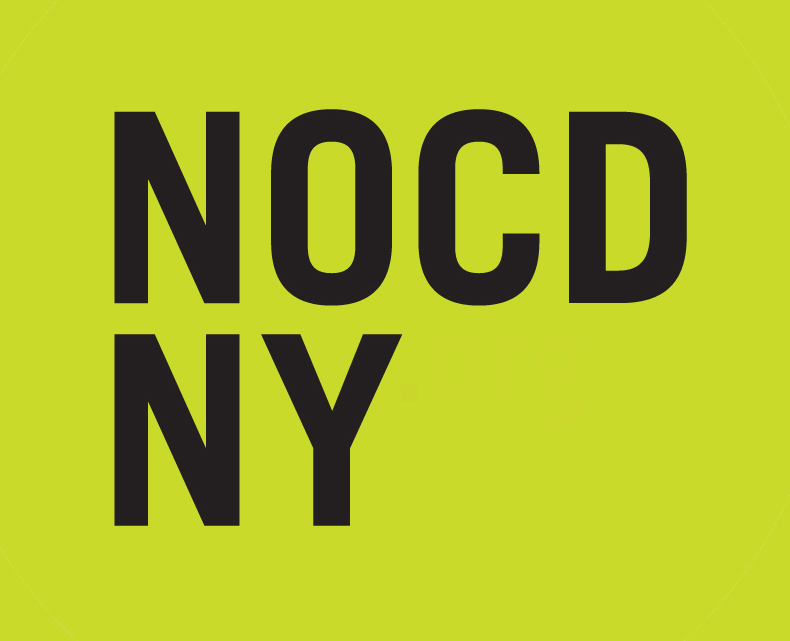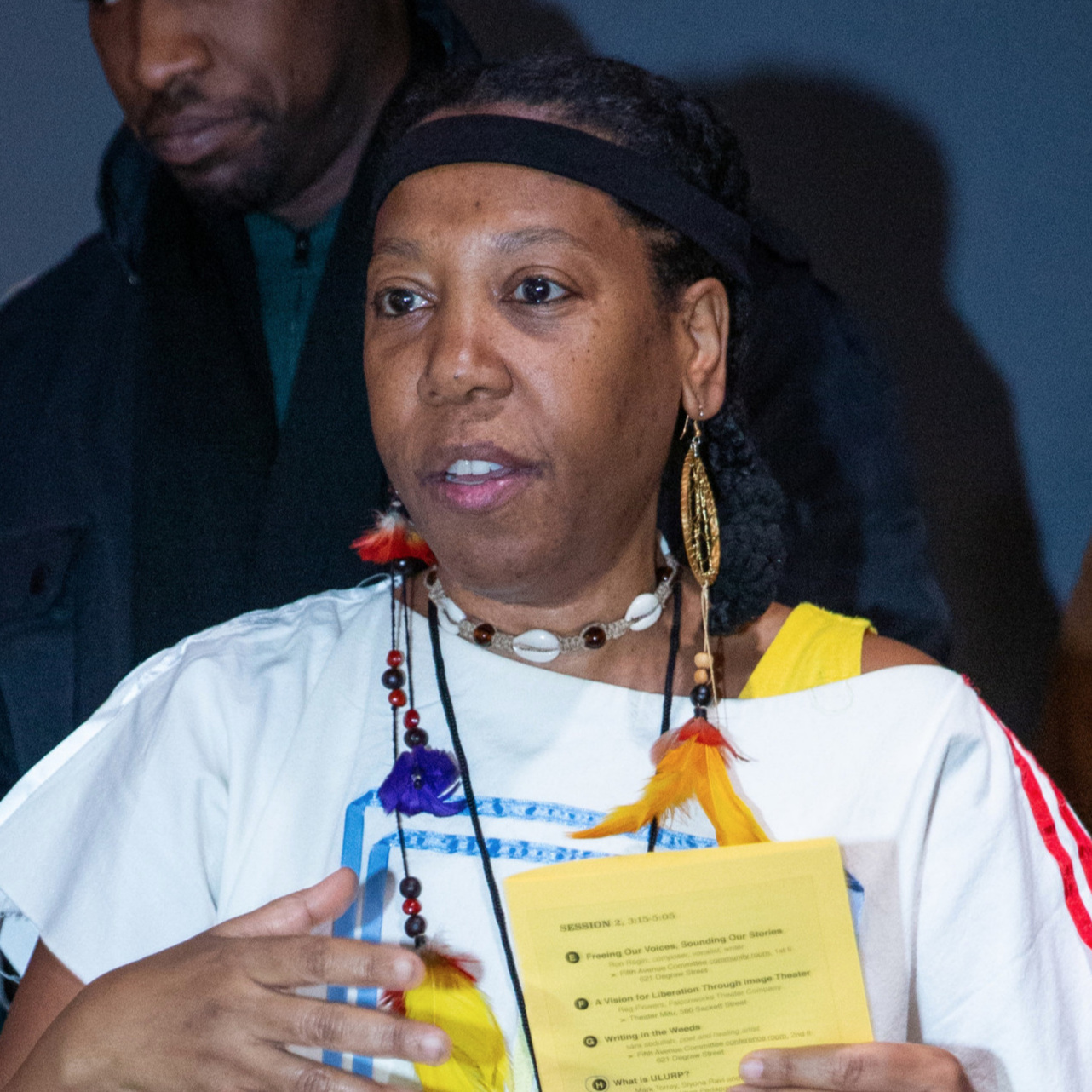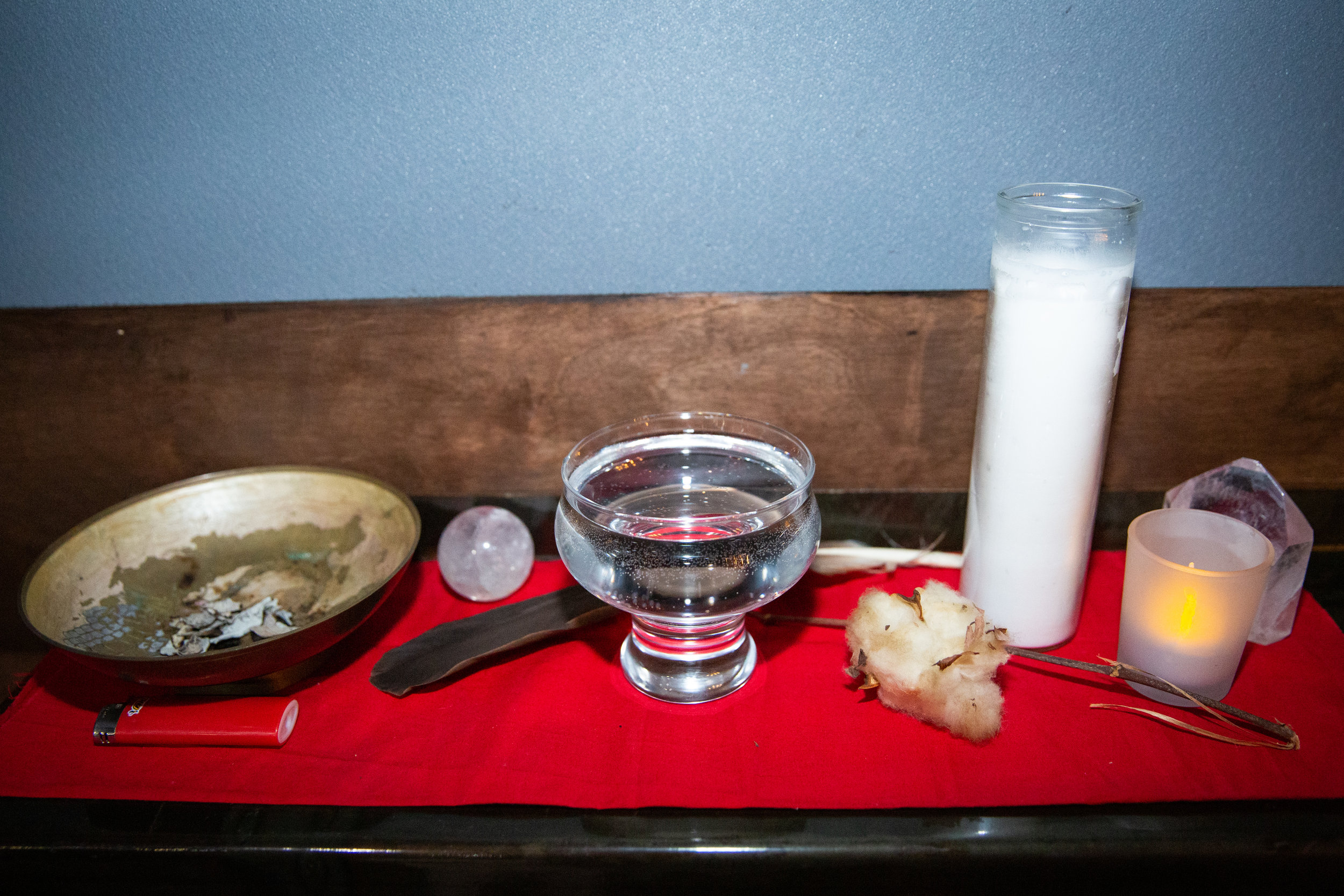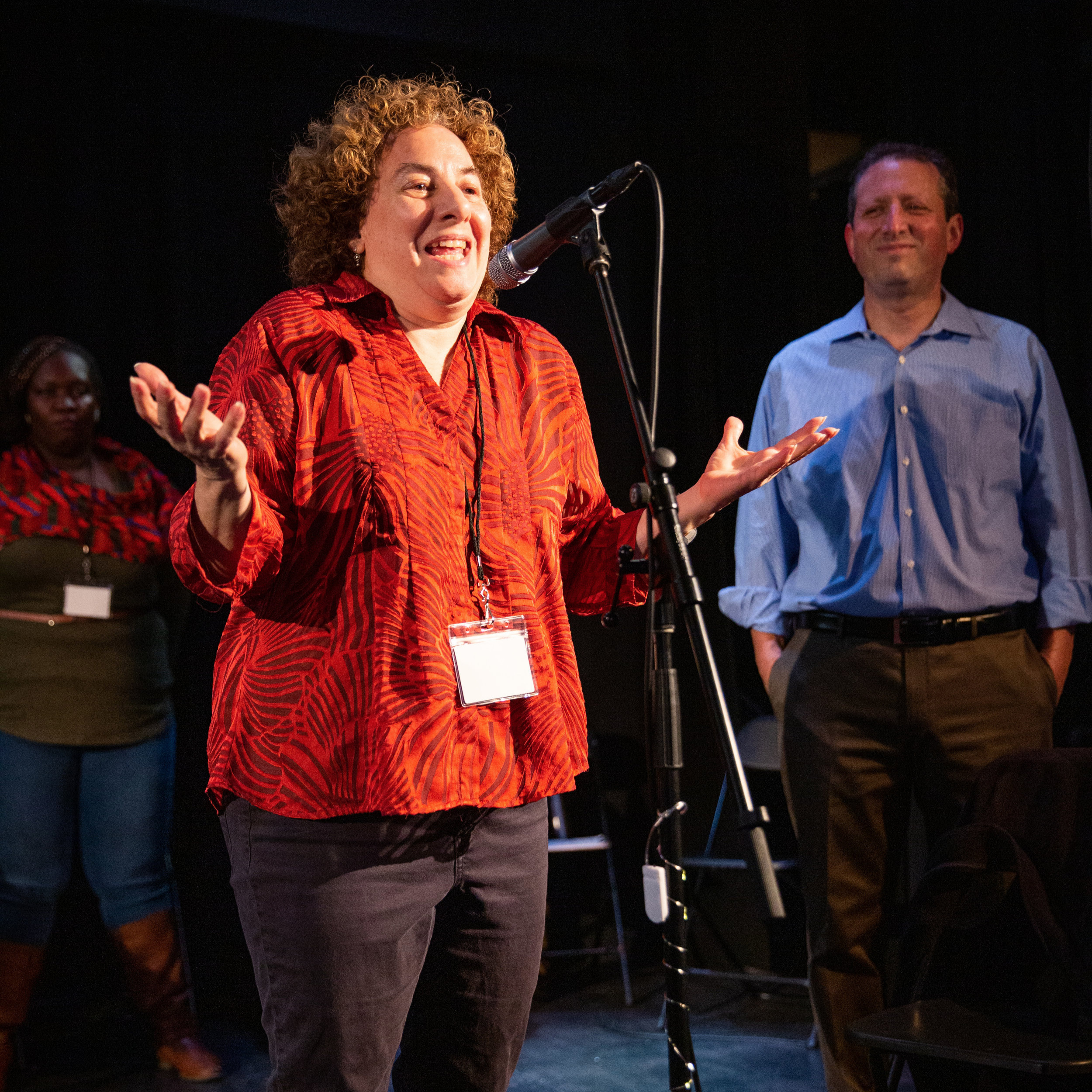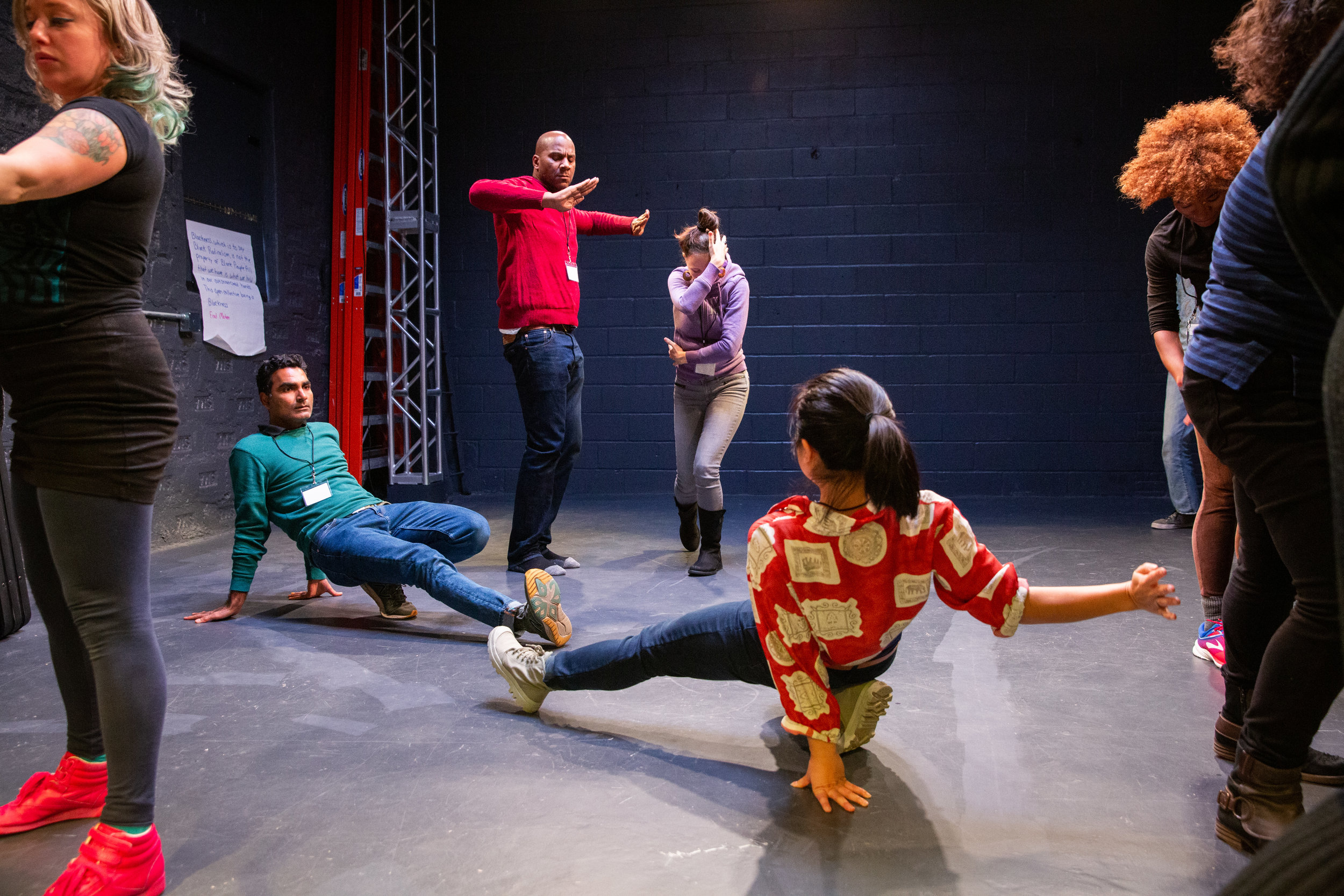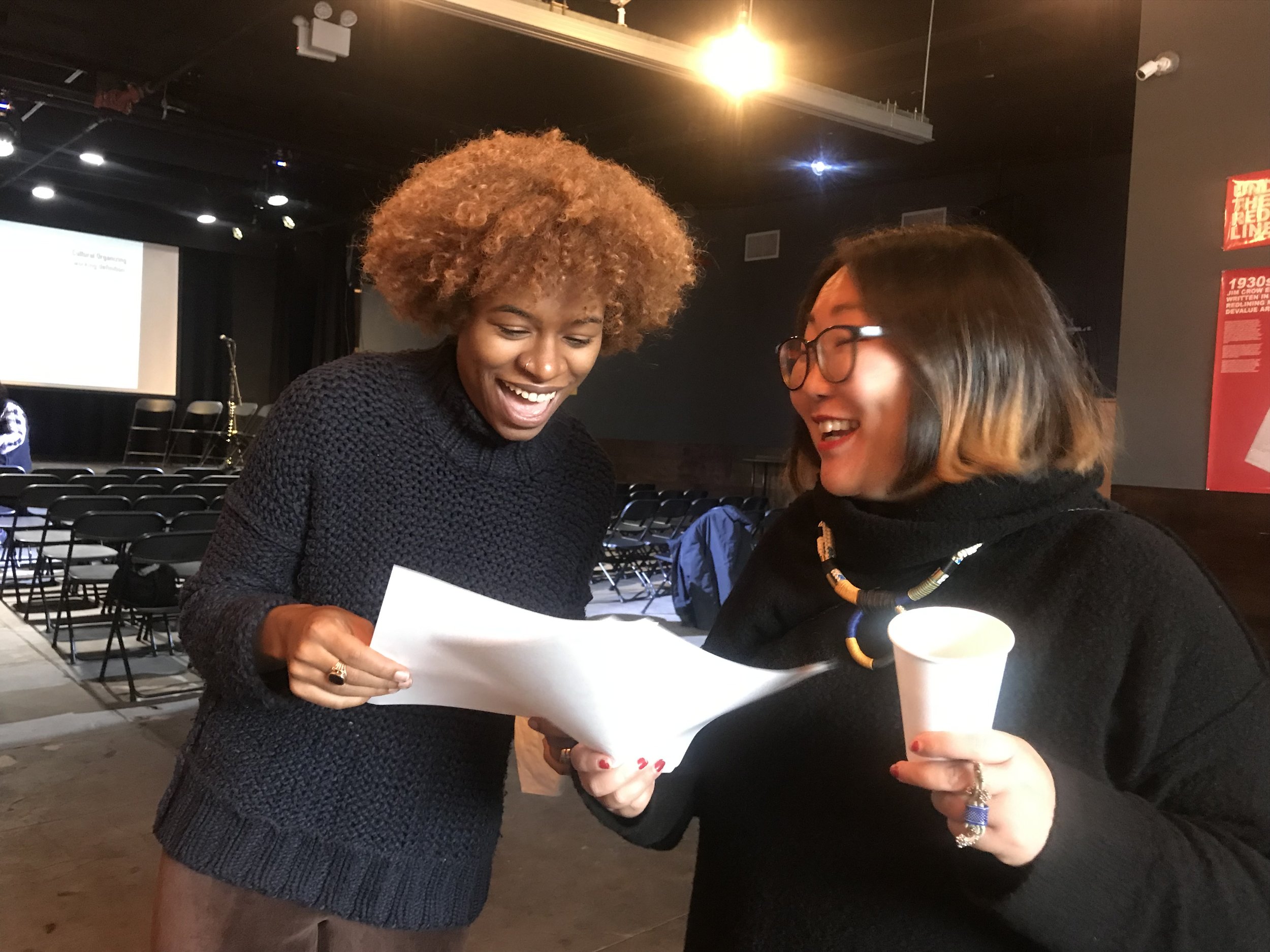From Outside In & Inside Out
Cultural Organizing for Community Change 2018
A multimedia journal by Masoom Moitra
photos by Shannel Resto, Masoom Moitra and NOCD-NY
My first immersion into Cultural Organizing for Community Change, an annual workshop held in Gowanus and co-sponsored by NOCD-NY and Arts & Democracy, brought with it a spectrum of unexpected experiences. I had long been disillusioned with conferences and workshops that underscore social justice but fail to embody the values that are discussed on panels and in roundtables. However, I have been working in partnership with NOCD-NY and Arts & Democracy on various projects as a community urban planner over the last few years and was well aware of their unique approach to arts, culture and organizing.
The workshop was opened by Imani Gayle Gillison, an artist and performer from Gowanus and Founding Director of Theater of the Liberated, with a blessing taught to her by a Lakota elder that honored the land that we were on and the ancestral heritage and culture of their communities. Imani has not just been a longtime resident of public housing in Gowanus, but has tirelessly used arts and culture as tools to get the voices of her community members heard, and demanded their inclusion in neighborhood planning and rezoning initiatives. Her powerful opening and presence set the stage for an introduction and series of workshops that thoughtfully integrated the principles of equitable cultural organizing into the day’s structure.
Looking around the room, I encountered a host of diverse accents, textures, sounds, smells, colors, stories and experiences. There was a sense of intimacy and warmth—like we were among family. Those like myself, who were interested in being trained in the methods of cultural organizing, were not just participants and listeners, but active learners who were building up a toolkit of culturally sensitive skills, strategies and practices that were rooted in a framework of social justice and versatile enough to be used in a variety of contexts—from classrooms to protests, from socially-engaged art projects to planning or design charrettes.
It was therefore fitting that the introduction acknowledged the state of the current political environment, and emphasized the importance of long term movement building and working together. Caron Atlas, director of NOCD-NY and Arts & Democracy, welcomed participants and called for the need to recognize the role of arts and culture in keeping us “connected, spirited, organized and imaginative”. Community organizer Hasiba Haq, in her introduction about community agreements and values, made us feel included and safe by acknowledging the many forms of organizing, building and being an activist. She also spoke about cultures as inherently residing within us and in our communities. For attendees like my partner, this was a welcome relief. In spite of being an artist and active member of his community, he entered the day hesitant to identify as an activist and felt like he would not fit into the workshops. Hasiba has experienced the strength and challenges of these principles in her own work and I instantly connected her words, encouraging us to place equity at the center of artistic practice, to memories of an event that I had attended and she had helped organize—a Community Iftar at Avenue C Plaza in Kensington, Brooklyn.
Ryan Gilliam of FABnyc and Downtown Art emphasized the power of art and culture, reminding us that “profound empathy demands vivid imagination” and that “human borders are always vulnerable to art”—words that resonated in our hearts long after the workshop. These principles can be seen clearly in her work to preserve, sustain, and grow the cultural vibrancy of the Lower East Side. Artist and singer Ron Ragin spoke about cultural equity and culture as a social process of remembering and forgetting. Karen Mack highlighted the significance of cultural self-determination, collaboration, interdependence and sustained relationships. Her work at LA Commons has uplifted these values, tested their strength, and given them meaning, also training others to do the same. Judi Jennings, recognized as “a voice for women and rural people in Kentucky and on a national level,” discussed the role of place, the importance of context, celebrating an abundance of community assets and the integral need for a collective vision of arts and culture to ensure thriving communities.
Judi Jennings (wearing the red necklace) listens during a discussion circle.
With heads abuzz from presenters sharing examples rooted in this radical framework, we broke out into discussion circles, to unpack pieces of what we just learned and connect to them at an individual level. I was a part of a small huddle that had a conversation about the relationship of placemaking to cultural organizing. Oddly enough, everyone in the group identified themselves as “outsiders” in their professional and everyday lives—immigrants, newcomers to neighborhoods, and recent New Yorkers. It evoked my own story of being a part of a family that was violently displaced–only one generation ago–as refugees from East Pakistan. A loss of land, history and ancestry involved deep rootlessness and the need to get used to adopting/being adopted by places, identities and struggles.
As capitalism and imperialism driven global and neighborhood-based dispossession becomes increasingly common, there are a large number of practitioners, artists, designers, planners, scholars and activists like myself who have no choice but to connect our creative practices to our own displaced histories. This can mean not being able to directly work within my own land or community (that has already been obliterated), but developing meaningful partnerships rooted in solidarity, and organizing to preserve, nurture and provide opportunities for communities to resist threats in their own neighborhoods.
A group expression led by Chanon Judson.
As a placeless individual at an amalgamation of margins, it was enlightening to reflect on these histories in relation to the intensely place-based past work that I have been involved with in Gowanus and, more recently, with El Puente to facilitate the development of a self-determined vision and plan for residents of Los Sures and Bushwick, who are in danger of being severely affected by economic, environmental, spatial, cultural, and housing crises. This conversation could have resulted in deeper insights, but there was a lot more to cover in the day, and we moved on to an energetic set of exercises to map the room.
We moved, stomped, danced, sang and chatted while forming affinity groups that connected our geographies. This was an opportunity to lock eyes with other attendees who were in the same circles of interest, ranging from community-based work to immigration issues, gentrification/housing, criminal justice, educational justice, or those working intersectionality across issues. It made visible much of this work that otherwise feels like it must happen behind the curtain. In some cases, I was able to connect faces to names that I had encountered through past work. One participant declared, “I come back every year just to see everyone from everywhere come together!”
Paying close attention to the Gowanus location of the workshop (NYCHA residents are an integral component of the neighborhood and include approximately 1,800 households across three housing communities), the workshop featured a morning exhibition, Undesign the Redline by Designing the WE. The exhibit connects a history of racial housing segregation in New York City to current political and social issues.
Undesign the Red Line by Designing the WE
Choosing from four workshops during the first session, I attended a B.O.L.D. (Builders, Organizers and Leaders through Dance) workshop, led by Urban Bush Women. Their introductory body percussion and movement exercises filled the room with joy and energy. We were making ourselves heard and collectively shedding inhibitions in powerful ways. The group echo of the chant “I don’t know what you came to do, I came to clap my hands, stomp my feet, raise my voice, move around” helped me feel present and claim space in a special way. I didn’t know what to expect, but I was not alone and made my way around a room overflowing with the enthusiasm of curious participants.
The opening of the workshop included the raising up of ancestors and those who inspire us. As we asked each other why we are here, we were guided into a celebration of self and ourselves as whole beings by Chanon Judson, a very skilled and inspiring facilitator who led us through the exercises and meticulously explained her methods. Urban Bush Women have a long legacy of thoughtfully connecting art to social justice, founded in 1984 by choreographer Jawole Willa Jo Zollar to bring the untold and under-told histories and stories of disenfranchised people to light through dance from a woman-centered perspective and as members of the African diaspora seeking to create a more equitable balance of power. Using a unique blend of dialogue and movement, the workshop harnesses the principles of using movement as metaphor, acknowledging the intelligence of the body, honoring multiple truths, leveraging performance skills (that we did not know we had!) and through the deliberate use of language that utilizes imagery and inspires vision-building.
Urban Bush Women B.O.L.D. workshop
In one exercise that particularly moved me, we glided through the floor of the studio space, leading with our body parts, forming invisible bonds with the strangers around us, and switching up who leads and who follows. Through our bodies, we understood the nuances of forming collaborations and partnerships. Some participants immediately forged strong connections, others drifted around for some time before they synchronized with another person. Some simply did not find a partner and mirrored the movements of someone who was not aware of their existence. This involved a delicate combination of taking control and letting go, a challenging and exciting way of sharing autonomy over bodies, minds, space and movement. This immediately exposed our preconditioned biases to capture or resist control and embody the politics of inclusion and exclusion/unpack experiences of feeling left out or unheard/embrace feelings of being welcome and included. While letting go, sinking and collapsing powerlessly was comforting, it was also tiring and energy consuming. Claiming space and power by controlling body movements channeled the need to build energy, confidence, experiment and explore while also being provoked to seek out partnerships, share power and create a vibrant environment of health and well-being. We were reminded that collaboration is not equal to compromise and that we cannot afford to forget what we bring to the table when we enter a conversation. Like the Corona based group—Mujeres en Movimiento—movement is not only that which connects physically to the body, but gives shape and visibility to everyday marginalization, global hegemony and the building of communities and social movements.
As the workshop concluded, we were highly energized and inspired, but also exhausted from the activities and mental engagement that each thoughtfully curated piece of the workshop demanded. It cannot go without mention the remarkable empathy of the organizers to make sure that each location was accessible, warm, and equipped with a table full of hot tea, healthy beverages, snacks and refreshments for attendees. Culturally sensitive accommodations of all kinds were made with care and attention by Tom, Emily, Claudie, Caron, Hasiba, Yun-Hee, Jules and the full NOCD-NY and Arts & Democracy teams. In a city that does not provide equitable access to basic human needs like public bathrooms or drinking water, it was very heartening to experience an event that proposed a different kind of model and was founded in compassion and justice.
The second session I attended was “Writing in the Weeds” with sára abdullah. Creative writing and poetry had been my first loves and primary forms of artistic expression through my early childhood years, but were replaced by visual art as I grew older. sára’s workshop was a perfect conduit into this forgotten past. She manifested a meditative chamber inside Fifth Avenue Committee’s conference room—a space that is host to a lot of community advocacy work and fiery conversations. sára’s calm presence set a contemplative mood in the room. She invited participants to feel free to move and be their full selves. The workshop was designed to honor those who came before and those who gather with her in circle through a life’s work in plant medicine, healing, pleasure activism, magic, writing, and nurturing the creative spirit in herself and others. Through free writing exercises and thoughtful prompts, she challenges us to explore: What lessons do “weeds” have for our creative and social movements? How can plant medicines act as a process for recovering the fullness of our personal and collective stories, memories, and identities?
Writing in the Weeds with sára abdullah
As I dramatically slowed down my mental pace and activated my senses to investigate the plants and herbs that sára was passing around, I became very aware of how stressed and stretched thin my body and mind was, and how dull my senses had become. During organizing, everything seems so urgent that without a space like this one to scatter around and exercise the creative blind spots that have long gone unnurtured, frequent burnout is inevitable and common. I have experienced several of my own. sára’s ability to let go felt like a loving caress and encouraged us to be ourselves. There was one round of sharing, but beyond that it was mainly a meditative and inward exercise that was cathartic and healing, even in the short time that we were present together.
My writing
Working in non-profit environments inculcates a sense of constantly adhering to parameters and constraints in order to be successful and results in certain limitations in creative thinking, writing, movement and design. It can also lead to us erasing our own selves completely in service of others. For the poet trapped inside me, there was a deep sense of liberation, and I wished that there was someone with sára’s healing energy around myself and my hard-working peers at more frequent intervals. I have no doubt that this would exponentially increase the impact of activist work and respect for reproductive labour, but also align inner peace and creativity building, much like Urban Bush Women, with external struggles for the reclamation of power and justice through creative means. I have learnt often from El Puente about the strength of rituals in creating foundations for community advocacy, but the free writing exercises inspired by the qualities, textures, smells and visuals of plants also provided an intimate connection to nature and was an utterly unique experience of honoring and preserving one's own mind in parallel to engaging outwardly.
bell hooks, in her book titled ‘Feminist Theory: from margins to center’ says, “Living as we did—on the edge—we developed a particular way of seeing reality. We looked both from the outside in and and from the inside out. We focused our attention on the center as well as on the margin. We understood both. This mode of seeing reminded us of the existence of a whole universe, a main body made up of both margin and center. Our survival depended on an ongoing public awareness of the separation between margin and center and an ongoing private acknowledgment that we were a necessary, vital part of that whole.” The Cultural Organizing for Community Change workshop was, for me, a way of reflecting on margins, but also having an opportunity to creatively explore the center—a place that I have observed from afar, studied, and worked towards changing, but have not often seen the insides of.
